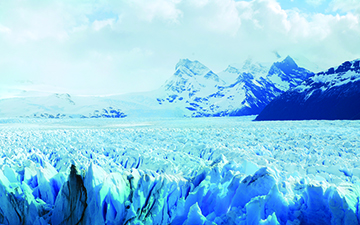An ice age is a period of long-term reduction in the temperature of Earth‘s surface and atmosphere, resulting in the presence or expansion of continental and polar ice sheets and alpine glaciers. Within a long-term ice age, individual pulses of cold climate are termed “glacial periods” (or alternatively “glacials” or “glaciations” or colloquially as “ice age”), and intermittent warm periods are called “interglacials“. In the terminology of glaciology, ice age implies the presence of extensive ice sheets in both northern and southern hemispheres.[1] By this definition, we are in an interglacial period—the Holocene—of the ice age that began 2.6 million years ago at the start of the Pleistocene epoch, because the Greenland, Arctic, and Antarctic ice sheets still exist.[2]
(From Wikipedia: March 2017)


